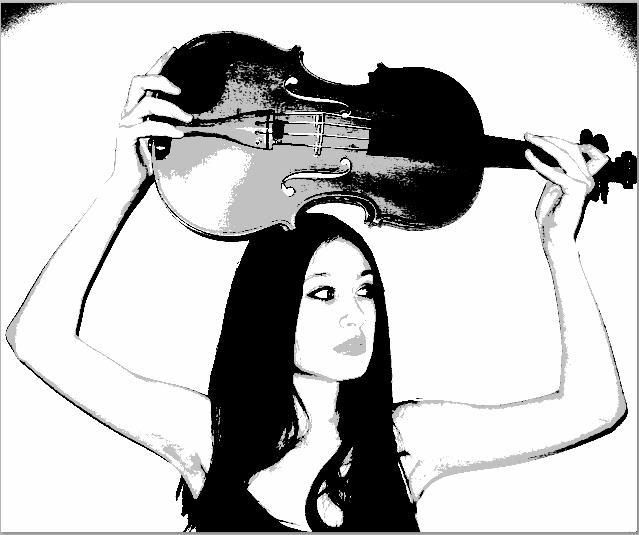There are plenty of aspects of English culture that people admire: tea time, rugby, and David Beckham are just three things that come to mind. Mention in front of many classical musicians the name "William Walton", however, and you are bound to invoke cries of disgust and complaints about having to play one of his dreadful symphonies or having been within earshot of his Viola Concerto. My favoring of Walton is not on account of my being a violist or of my British ancestry (I'm not going to say it doesn't help, however), but due to my admiration of his creative genius as well as his ability to incorporate all the avant-garde and traditional tonal systems of the time into all of his works.
The year was 1922 and anything was possible. On the edge of an emerging modern world, Walton, an Oxford dropout, had joined forces with Siegfried Sassoon and siblings Sacheverall, Osbert, and Edith Sitwell, all revolutionary literary artists. Assocations with these folk led him to introductions to social circles including T.S. Eliot, compelled him to travel to Italy, and exposed him to such cultural phenomena of the day as American jazz and Diaghilev ballets.
Several artistic movements were flourishing at this point in time, and through his immersion in contemporary art Walton was able to incorporate all he saw into his works. Dadaism, born in Switzerland during World War I, was at its peak just as Walton was exploring the cultural world around him. Arnold Schoenberg had been sharpening his tonal (or atonal, for that matter) language at the time, although it would be decades later that his work would formally be noted as "serialism". (Leave it up to a triskaidekaphobic man to devise a system of composition that leads only up to twelve tones, is what I always say.) Paul Hindemith (who filled in for Lionel Tertis at the last minute to premiere Walton's Viola Concerto) had always been an expressionistic composer, but by the 1920s was developing a complex contrapuntal system that, by the 1930s, had led him to publish a book on his theories, The Craft of Musical Composition. In his music theory he ranked intervals on a basis of consonance to dissonance, applied in his compositions by using untraditional key signatures and a musical language that sounded anything but tonal. The expressionist movement by this time had been waning, yet its extremity and morbidity still held a voice within high art. Impressionism had also left its mark, and this being England, there was a certain fantasia-like brand that had impressed itself upon the composers of the era, not discluding Walton himself.
The beauty of Walton was that he settled not on one schools of art and music, but sought to incorporate several of them into his works. He arranged jazz scores in the 1920s before composing the work that catapulted him into fame, the Viola Concerto of 1929. Already this work demonstrated Walton's ability to utilize so many artistic and musical ideas of the day. Written without a key signature, the work begins ambiguously using the interval of half-steps, sounding almost like resolutions. The viola enters with a melody that can be identified by A minor only by the first few notes, swiftly modulating into several other keys with the aid of one pivotal note. The orchestration is thick and beautiful, and there is a distinctive use of sixths, mostly minor, throughout the solo viola part. Leaps of minor sevenths and ninths are also favored in the orchestra part, with sudden bursts of a comforting tonal melodic passage. When performed skillfully, the piece is able to convey a sense of nostalgia, of irony, and of excitement that eludes many other compositions of the day.
Symphony No.2 is also a fascinating work to analyze. As well as having absorbed contemporary, avant-garde artistic movements, Walton has now expanded his tonal language to fit Elgar's lush melodic passages, a hallmark of English composition. We also hear a bit of Mahler in his go-for-broke, thick orchestrations. It is possible that this work can evoke any number of things, and like Mahler takes the listener on a stream-of-conscious emotional journey. Works like this are certainly reflective of contemporary literary colleagues in his part of the world as well; I'm sure James Joyce would readily approve the sparkling harp and string passages juxtaposed by calm winds and intense, pounding brass and percussion.
Walton was a very successful composer in his day and won the support of many notable artists. He did film work (such as in films featuring the famed Shakespearean actor Sir Lawrence Olivier in Henry V, Hamlet, and Richard III), composed a piece for the coronation of King George VI (the march Crown Imperial), and was able to expand the concerto repertoire. Jascha Heifetz premiered the violin concerto, and later toward the end of Walton's life, Gregor Piatigorsky premiered his cello concerto. He also composed opera, such as Troilus and Cressida, which was commissioned by the BBC in 1947. He was even supported by his old friend Sassoon's own patron, the famed Lord Berners.
He enjoyed a deserved amount of success during his lifetime, so why the apprehension in programming or studying his works now? Perhaps it is the difficulty and senselessness of the individual parts within the orchestra that repels young professionals. There is nothing rewarding in their parts; the notes are hard and the musical concepts are even harder. Stand back from the rest of the orchestra and listen, however, and you are likely to be blown away at how many intricacies in the score are able to benefit the whole of the orchestra.
What about conductors, then? To conquer Walton's scores would be a great accomplishment. Firstly the manner in which these pieces are composed can be difficult to read; the page is littered with changes of meter and, like in impressionistic music, every musical nuance is dictated to a scrutinizing level. It is not more difficult than any of the Second Viennese School compositions, which seem to be more readily favored in concert halls than English music in general, however; but perhaps in our culture there is so much favoring of German music that afterward there is only room for a little French or Russian music.
At any rate, Walton was an exceptional talent whose musical work today is highly misunderstood and underrated. In spite of all the complexities in his works, they are still reminiscent of a regal, maritime Great Britain; perhaps someday Walton will join the ranks of such great English cultural movements as scones or the Spice Girls.
Saturday, August 11, 2007
Subscribe to:
Post Comments (Atom)


No comments:
Post a Comment